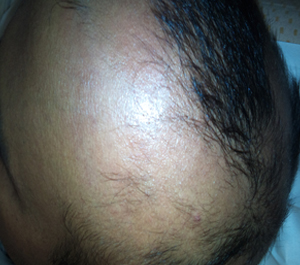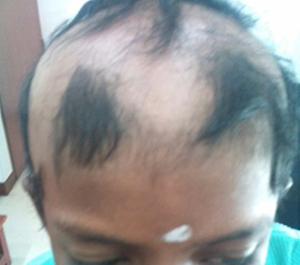

1. What is Alopecia?
Alopecia is defined as a hair-loss disease that affects men, women and children of any age. The onset of the hair-loss is often sudden, random and frequently recurrent. The different types of alopecia based on the type of hair loss includes:
- Alopecia Areata (AA) - hair loss occurring in patches, usually small and round, anywhere on the body.
- Alopecia Totalis (AT) - total loss of the hair on the scalp.
- Alopecia Universalis (AU) - total loss of all hair on the body.
- Androgenetic Alopecia - male/female pattern baldness.
2. What are the causes for alopecia?
Alopecia areata is an autoimmune condition in which the immune system attacks the hair follicles. People with alopecia areata also have a slightly higher chance of developing other autoimmune diseases such as thyroid disorders, pernicious anemia and vitiligo.
Androgenic alopecia can be caused by a variety of factors related to hormones like thyroid dysfunctions, ovarian cysts, androgen secreting tumors and menopause. Over 20% of people with alopecia have a family member with it and there is some amount of genetic predisposition. Female pattern baldness is caused by hormones (particularly androgens), aging, and genetic predisposition.
Other causes of hair fall include stress, nutritional deficiency, dandruffs, hair dyes, soaps and detergents. Localized trauma to the hair follicles from tight hairstyles like braiding, straightening, ironing, rebounding, tight ponytails and extensions can lead to hair fall. Medications that are used for the treatment of acne, seizures, hypertension, mood disturbance and cancer can also cause hair fall.
3. Will my hair grow back?
The vast majority of people with alopecia experience some degree of re-growth. The chance of regrowth depends upon the cause of hair loss and correction of the precipitating factor. There are various treatments available including topical minoxidil, antiandrogens, supplementation of deficiant vitamins along with local stem cell and growth factor injection.


